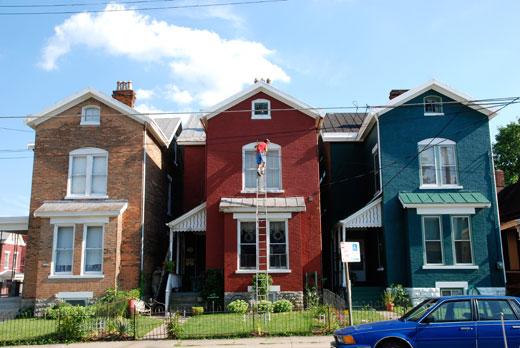
In 1925 Cincinnati was the first city in the nation to have a formal comprehensive plan adopted by its city council. The 1925 plan has only been updated twice, once in 1948 and again in 1980, and will soon be completely updated for the first time in nearly three decades in an effort being dubbed
Plan Cincinnati.
Contemporary comprehensive plans are typically updated every five years and are often tied to capital improvement plans so that there is legal standing and financial support for the elements of that plan – something that city officials hope to have done with the City's new comprehensive plan that is currently getting underway.
Current Mayor Mark Mallory pledged his support for city planning when he originally ran for mayor. That support translated into the recreation of the City’s
Planning Department that had been dismantled by the previous administration, and this fall it will continue with a major kickoff to the efforts to have a new comprehensive plan completed by the end of 2010.
The comprehensive planning effort has been allocated $250,000 this year and next year from the City's Capital Budget, and will have work done both in-house and contracted out for more specific elements of the plan that need additional expertise.
Chief Planner Margaret Wuerstle says that the City has been going out to the community councils this summer to make them aware of the process and inform them about the four major meetings that will be held this fall:
- September 30th from 6pm to 8pm at the Corryville Rec Center
- October 5th from 6pm to 8pm at the Price Hill Rec Center
- October 15th from 6pm to 8pm at the College Hill Rec Center
- October 22nd from 6pm to 8pm at the Madisonville Rec Center
Wuerstle says that the City is hopeful it will have an appointed Steering Committee within the coming weeks that will include 31 people who will help lead the process including the plan’s eleven primary elements: Housing & Neighborhood Development; Economic Development & Business Retention; Transportation & Transit; Health, Environment & Open Space; Land Use; Historic Preservation; Urban Design; Utilities & Infrastructure; Institutions; Intergovernmental Cooperation; and Fiscal.
Following the meetings this fall there will be the Neighborhood Summit meeting in February which will almost entirely be devoted to the comprehensive plan and how the various neighborhoods need to be involved.
The 10-year comprehensive plan will create a vision for where the City wants to go and how it intends to get there. "It’s very important that people are involved. This is their plan, and is the way they can get involved to help fix the issues they may have in the city," says Wuerstle who also encourages residents, business owners and anyone who shares an interest in the future of the city to get involved.
If you are interested in getting involved you can email Margaret Wuerstle at
[email protected], call the Planning Department at (513) 352-4845, or become a fan of Plan Cincinnati on Facebook. Once you have shared your interest and contact information, the City will connect with you about future events and engagement opportunities.
Writer:
Randy A. SimesPhotography by Scott Beseler
Enjoy this story?
Sign up for free solutions-based reporting in your inbox each week.